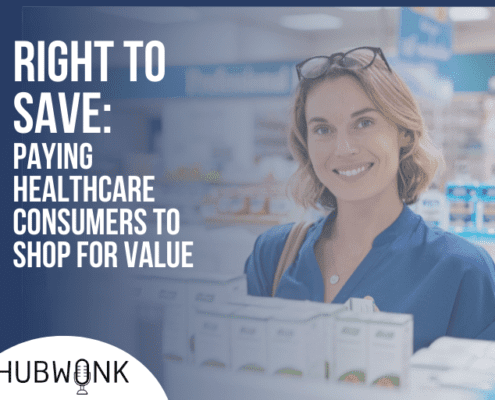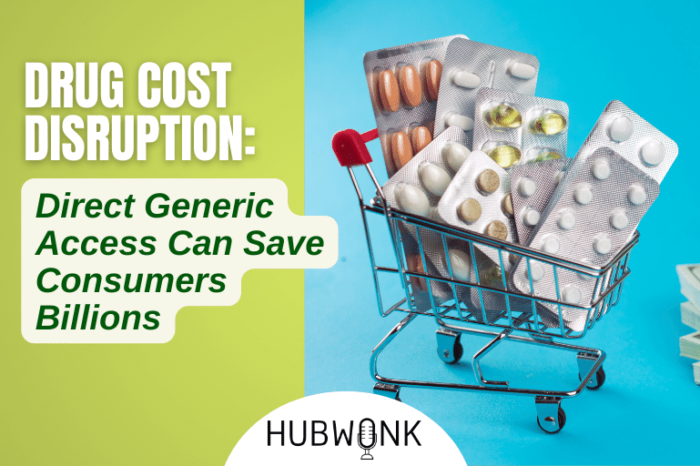Drug Cost Disruption: Direct Generic Access Can Save Consumers Billions
/in Featured, Healthcare, Podcast Hubwonk /by Editorial Staff
Hubwonk host Joe Selvaggi talks with Dr. Hussain Lalani about his recently published research on the potential for more than $3 billion in savings were Medicare to use Mark Cuban’s new direct-to-consumer drug company to purchase generics.
Guest:
 Dr. Hussain Lalani is a Primary Care Physician at Brigham and Women’s Hospital, Fellow at Harvard Medical School and the Program on Regulation, Therapeutics, and Law (PORTAL), and a part-time student in the Masters of Science in Health Policy and Management and the Harvard T.H. Chan School of Public Health. He is a first-generation American, born and raised in Dallas, and practices Internal Medicine at the Phyllis Jen Center providing comprehensive primary health care to adults managing chronic diseases, behavioral health, and preventive screenings. He is passionate about ensuring affordable access to equitable healthcare for all, with a current focus on prescription drug pricing policy as a lens into the complexities of health care delivery and policy. Dr. Lalani’s work has been published broadly in the JAMA Internal Medicine, JAMA Network Open, JAMA Cardiology, Annals of Internal Medicine, and the American Journal of Managed Care. He is the Co-Founder of This Is Our Shot and VacunateYa, a national grassroots social media organization that elevates the voices of trusted medical professionals to build healthier communities and combat health misinformation. Visit www.thisisourshot.info and www.vacunateya.com to learn more.
Dr. Hussain Lalani is a Primary Care Physician at Brigham and Women’s Hospital, Fellow at Harvard Medical School and the Program on Regulation, Therapeutics, and Law (PORTAL), and a part-time student in the Masters of Science in Health Policy and Management and the Harvard T.H. Chan School of Public Health. He is a first-generation American, born and raised in Dallas, and practices Internal Medicine at the Phyllis Jen Center providing comprehensive primary health care to adults managing chronic diseases, behavioral health, and preventive screenings. He is passionate about ensuring affordable access to equitable healthcare for all, with a current focus on prescription drug pricing policy as a lens into the complexities of health care delivery and policy. Dr. Lalani’s work has been published broadly in the JAMA Internal Medicine, JAMA Network Open, JAMA Cardiology, Annals of Internal Medicine, and the American Journal of Managed Care. He is the Co-Founder of This Is Our Shot and VacunateYa, a national grassroots social media organization that elevates the voices of trusted medical professionals to build healthier communities and combat health misinformation. Visit www.thisisourshot.info and www.vacunateya.com to learn more.
Get new episodes of Hubwonk in your inbox!
WATCH:
Read a Transcript of This Episode
Please excuse typos.
Joe Selvaggi:
This is Hubwonk. I’m Joe Selvaggi.
Joe Selvaggi:
Welcome to Hubwonk, a podcast of Pioneer Institute, a think tank in Boston. When trying to address the more than $4 trillion annual cost of us. Healthcare policymaker often target the nearly 600 billion cost of drugs. While drug manufacturers can point to the high cost of development and testing as justification for their prices, generic drugs, those that have gone off patent protection, seldom charge prices that substantially exceed production costs. Indeed, according to the government accountability office generics save the US healthcare system more than $1 trillion from 1999 to 2010 recently, however, price spikes, anti competitive practices and supply chain complexities have showcased weaknesses and inefficiencies in the generic market, such as the fact that one in five generic drugs doubled in priced between 2014 and 2017. Seeing this uptick in generic pricing as a business opportunity, billionaire and shark tank investor, Mark Cuban in January of this year launched the Mark Cuban cost plus drug company selling more than 100 generic prescription drugs online, some at substantially lower than average market prices.
Joe Selvaggi:
His direct to consumer model, if successful could substantially disrupt the generic market, saving billions and offering low income consumers access to once cost-prohibitive drugs. Why do the prices of many generic drugs still substantially exceed costs who stands to benefit from direct to consumer innovations and how can patients and policy makers work to ensure this new model is embraced by those most in need? My guest today is Dr. Hussain Lalani, a clinical research fellow and internist at Brigham and Womens hospital in a research piece recently published in the Annals of Internal Medicine, entitled potential Medicare part D savings on generic drugs from the Mark Cuban cost plus drug company, Dr. Lalani examined the potential $100 billion cost savings where Medicare to purchase drugs offered from mark Cuban’s company. We will discuss how the inner workings of our healthcare system created this opportunity for Mr. Cuban’s model, how far this model could go towards saving money for us drug consumers and what steps policy makers and individuals can take to encourage a robust uptake of this innovative model. When I return, I’ll be joined by Brigham & Women’s hospital Dr. Hussain Lalani.
Joe Selvaggi:
Okay. We’re back. This is Hubwonk. I’m Joe Selvaggi, and I’m now pleased to be joined by internist and researcher, Dr. Hussain Lalani. Welcome to Hubwonk, Hussain. Thanks so much for having me, Joe. All right. This is a fairly complex topic that deserves to be taken part a part for our listeners piece by piece. Many of them are not healthcare system experts. So let’s start at the beginning. We all agree that I think it’s roughly $600 billion a year that the us spends on drugs and, and and and medicine. So we’re not going to today focus in on new drugs and the research and development that goes into new drugs, but rather those for which the patent has expired or so called generic drugs. So let’s start at the beginning and talk about generic drugs. How does a drug go from being patent protected to generic?
Dr. Hussain Lalani:
Thanks, Joe. That’s, that’s a great question. You know, the, the Hatch Waxman Act in 1984 really established the kind of the modern system for generic drug regulation in the United States. So companies come forward with a brand name, product that patent eventually expires and generic companies are then required to prove that their drug is chemically bio equivalent to the original brand name drug. And it goes through an extensive process at the FDA that has been simplified that’s and known as the abbreviated new drug application or the “anda” process. And and that is the process that all drug companies generic drug companies that wanna bring a new drug to market have to go through. And once they’re able to prove that the drugs are bio equivalent and meet the standard, then they are able to market that drug. But there are some caveats that make it challenging to do that sometimes.
Joe Selvaggi:
Okay. So I just, yeah, one, one step at a time. So you know, for those of us who are more versed in economics than in medicine, a generic by that standard, and it seems like the government actually has tried to make it as easy as possible for others to produce this thing. It’s, it’s more or less a commodity. In other words, regardless of who produces it, it has the same efficacy and safety regardless of, of its origin. Is that fair to say,
Dr. Hussain Lalani:
Yeah, the there’s no formal requirement anymore to prove safety and efficacy for the generic drugs, but it is the same chemical ingredient. And they just ha there’s ways to prove that the the two drugs are bio equivalent or that they pretty much produce the same levels in the blood. And that often satisfies that requirement.
Joe Selvaggi:
So if we’re talking about somewhat generic commodity, and we have a clear path to get give producers the opportunity to make this drug in theory market forces would suggest that because of competition the cost of the drug would be relatively small given that the drugs are known to be relatively cheap to produce they’re expensive to develop, but relatively cheap produce. I, is it the case that generics in general are very, very, very cheap.
Dr. Hussain Lalani:
Yeah. You know, for the, for the vast, for the majority of generics the prices have come down and over time and they, they can be fairly inexpensive to produce, but there are some generic products that get, that can still have substantial manufacturing costs. So it, it it’s hard to generalize entirely, but in general, yeah, the, the the costs are relatively low for production and they have been dropping, we’ve seen over the last just two years as well.
Joe Selvaggi:
Okay. Let, let’s give our listeners a sense of how big the generic market is. You mentioned it. I think it was 1984. I don’t remember the name of the act, but it effectively described terms of drugs coming off patent and into generic. I mentioned 600 billion tab for, for drugs. How much of that in, in numbers and in dollars do generics represent, is it a big portion or a relatively small portion?
Dr. Hussain Lalani:
Yeah, it’s actually a pretty small portion. So the way I like to think about it is about 90% of all prescriptions that are filled are generics, but they only represent about 20% of the overall spending of the health system and O of sorry, of the overall health overall health spending. And that’s about on average, a dollar a day or less for those generic medicines. And when you contrast that to brand name medicines, brand name medicines are about 10% of all prescriptions. But they make up the vast majority about 80% of overall spending. And we know that they cost on average about $20 a day or so, or more
Joe Selvaggi:
So the effect of generics actually does work. But what we’re gonna talk about today is despite the fact that in theory generics should offer very little profit motive for for you know, price gouging there’s no, you know, competition would, would suggest it wouldn’t be one, wouldn’t be able to do this. And yet we’re gonna talk about today a innovation in generics whereby someone has entered the market and offered drugs potentially substantially less in the generic world. So let’s, let’s start with which drugs right now in the, that are generic, are commanding a large enough profit margin to justify mark. Well, we’ll get to it, mark Cuban’s entry. How are we, how is it that we’ve gotten here? How is it that there’s an opportunity to compete in the generic world?
Dr. Hussain Lalani:
So generic drugs are produced, as you mentioned by generic manufacturers, and then they must be delivered or distributed to the people. So somehow the drug is made and then it needs to make it to the patient. The consumer at the pharmacy, and there is a, over the years, there has been a complex distribution supply chain that has developed to distribute these drugs. And that includes a number of actors along the way. So there’s distributors or wholesalers that work with manufacturers there’s then the, the pharmacies that directly buy from those distributors. There’s the farm benefit managers that negotiate on behalf of insurance companies. And there are the insurance companies who, who pay some portion of these drugs the drug costs for their beneficiaries who have the plan. So, as you can see, there’s kind of a, a number of actors along the way in the current Mar in supply chain market, that all take a share of what the cost ends up being to patients.
Dr. Hussain Lalani:
So it’s not just the cost of producing the drug that, that we have to pay for. And so you know, that that’s part of in our, in our latest research paper, where we are able to somewhat isolate what happens when a new company like the mark Cuban cost plus drugs company comes in and purchases D drugs directly from manufacturers, and then sells them directly to the consumers without having all of the other actors in the middle of that process, in the supply chain. So you know, that, that is an important thing to, to be mindful of. And, you know, there, there are also some barriers that keep the generic costs high for certain drugs. Not every generic drug has a, a strong market. There is limited competition for a small number of drugs about 5% or so of, of drugs. And then there’s also ingredient shortages that can lead to price spikes that we have seen in recent time as well.
Joe Selvaggi:
So what you’re saying is it’s not a function of, of producers charging a premium for a generic, but rather it’s the process it’s getting from the producer to the consumer, this labyrinth of, of process we on this podcast have explored why or how PBMs contribute so much cost to the system, despite their promise to, to advocate for lower costs. Of course, insurance companies ours is an insurance driven healthcare system. So we’re familiar with that. So I think our audience is well acquainted with all the reasons why healthcare is so expensive. So let’s, let’s, let’s stipulate that it’s a very lengthy process from getting from producer to consumer. So let’s dive deeply into your, the research you’ve done into a mark Cuban’s disruption given that all these drugs are prescribed drugs and given that we’re now getting more and more comfortable with going from the consumer directly to producers I’ internet and Amazon, these sort of things has this direct to consumer model been tried before. And if it has, why hasn’t it failed? Why hasn’t it succeeded in the past? Why have we allowed so many intermediaries to drive up our costs?
Dr. Hussain Lalani:
Yeah. You know, there have been quite a few director, consumer companies that have offered low cost, generic, generic medicines. The most popular one that people may be familiar with is Walmart. Back in 2006, Walmart launched the $4 list which now includes about a hundred drugs that they sell at anywhere from four to $15. And director consumer, you can just go directly to the pharmacy and pick that up. And there are other chains, drug stores as well that have started to offer discounts for low cost generics. That includes Costco with their prescription drug savings program. I believe Kroger also has a program like this. And since then in 2011, we also saw the introduction of a slightly different market in a bit sort of, yeah, we saw the introduction of a new sort of model to have lower cost generics, which was through coupons.
Dr. Hussain Lalani:
And that was GoodRx in 2011, where you can get hundreds to thousands of different coupons for various different drugs at, at, at any number of pharmacies in your zip code to lower the costs of those of those drugs. The tricky thing is it, it depends on the zip code that you’re in and it can really, the prices can really vary by the, by the drug. So there have been a number of previous innovations to try and lower the cost for certain prescription drugs, generic drugs. But this, this company, the Mark Cuban company has started to gain a lot more attention in the media. In part, I think because of Mark Cuban and his stature, but also because they are, they are starting to cover what looks to be a larger number of generic drugs than what Walmart and Costco have at the moment.
Joe Selvaggi:
Well, we all know Mark Cuban he’s well known as both a billionaire and one of the panelists, I guess, on shark tank. So he’s a a wise investor, so he’s seen opportunity here. So if you’re saying there’s not a lot of money in, I think he’s his ambition is ultimately to produce these drugs. I think he’s building something down in is it Austin or, or Dallas, Texas, where the chemicals go in one door and the drugs come out, the other, so he’s, you know, total vertical integration. What is it unique and what do you see as the opportunity or the addressable market for his particular model? How is it so much different than the others? You mentioned
Dr. Hussain Lalani:
The main thing that’s different about the mark Cuban cost plus drugs company is the promise. And so far the delivery of complete price transparency for all their drugs. You can literally go to their website and type in the drug that you need as if they have it then you’ll be able to see what the cost is. And it very clearly breaks down the cost, which is the cost that they pay to purchase the drug, which they call the manufacturing cost. It’s really like the purchasing cost plus 15% of a margin that they, that they take and then $3 for a pharmacy fee, and then whatever price you see there, you can adjust it based on the quantity that you need and the dose that you need. And then don’t forget to add the $5 flat rate of shipping. And that is that’s the cost of the medicine. And it’s the first time that we have seen the costs of a specific generic drug broken down that simply. And so that, that in itself is something unique and it’s helping us to get a sense for how much certain generics drugs actually cost and the cost of distributing those drugs. And, and we’re starting to learn more as more drugs come out.
Joe Selvaggi:
So price transparency is a big part of our formula. Our prescription I’ll use a medical term for helping to reform the medical community price transparency, letting consumers understand where the money’s going and who’s producing what for what price so they can choose. So I, I want dive into where this, what the, let’s say, addressable market, where, what is, is it sky’s the limit could literally every drug be subject to this new model where ultimately we would know the price of everything.
Dr. Hussain Lalani:
Well, I wish that was the case for all drugs. That would be amazing. I like to say often that, you know, doc, as doctors, we prescribe medicines, but we don’t really know the cost of the drugs we prescribe often, unless they’re commonly used available drugs on some of these direct to consumer platforms that we talked about. And so it, but it is possible that if the company is able to negotiate with manufacturers for the vast majority of drugs, they may be able to have thousands of generic drugs, which I think is part of what it sounds like they’re trying to do. And, and so that if, if they were able to achieve that, we would then have a better sense of how much those generic drugs cost. It would be great to know how much the brand name, drugs cost, since those are the ones that are the most challenging for patients to afford. And so,
Joe Selvaggi:
Yeah, sure. Now, when you talk about brand name, you’re not talking about ones that are still on patent, are you?
Dr. Hussain Lalani:
I am, yeah.
Joe Selvaggi:
Okay. All right. So again, I don’t wanna go too deep into that, but I mean, sort of an economist might justify the fact that something on patent is not expensive because the price to produce, but rather you’re, you’re in a sense claw back the money it took to develop the drug in the first place, right? So it’s a, it is a different market dynamic. It’s sort of, you’re, you’re, you’re paying for past research rather than current production. I mean,
Dr. Hussain Lalani:
Well, I would say that, like the only, the only tricky part where this becomes relevant is that, you know there are, and this is really unfortunate, but it is a reality. We have seen brand name manufacturers, making it hard for generic manufacturers to come to market through what’s called pay for delay deals. If you may be familiar, it’s where
Joe Selvaggi:
We know we haven’t, we haven’t covered that. So let let’s, let’s, let’s go there.
Dr. Hussain Lalani:
Yeah. So this is actually it’s really messed up. But it, it, it has been investigated by the federal trade commission. And there has been a number of both accusations and convictions of drug companies that have paid generic companies to not come to market, essentially preserving their monopoly and to allowing them to continue selling their drug without any competition. Lipitor is a really good case to that. So Pfizer is, was, you know, the maker of Lipitor and they, they did admit to doing this where they essentially paid off their competition for a few years around 2008. And, and that allowed them to continue selling the drug for about, I think, close to two additional years without any competition. And that then, you know, kept the price high for consumers. But you know, there are a couple other sort of challenges to this process and one of them where it makes it hard for generics to come to market is what’s called these patent thickets.
Dr. Hussain Lalani:
And I’m not sure if you guys have covered that before, but it’s, it’s this idea where you, a drug company can patent a variety of different minor processes or MI aspects of drug development, but then extend the length of their monopoly protection. So you know, I would say that it, these sort of market forces it’s not really a free market <laugh> for those types of drugs, as we know, and, and sadly, you know, the thought always, I think that the thinking, at least in the theory of these policies was that yes, the drug will have ex exclusivity for some period of time for the innovation. And then after that the drug will become more affordable for patients. And, and while we have seen that in, in many cases, there are a number of cases where that gets delayed or is actually really hard to produce a competitor because of the, these, these kind of anti-competitive behaviors that, that, that have not been well addressed, unfortunately in our current market. And that then ends up leading patients to, to struggle and suffer with the cost.
Joe Selvaggi:
Well, in earlier shows, we have actually highlighted not necessarily the drug companies, but the intermediaries. And you mentioned them earlier in the show PBMs insurance companies, that sort of thing. Let’s talk about how they might thwart the effort to reduce the cost to consumers. As, as they say, 1, 1, 1 person’s waste is another person’s income. So I’m sure that cutting out and going direct obviates the need for insurance and P you know, if you’re going direct, you’re not using insurance. I I’ve got that. Right, right. If I’m going to mark Cuban, I’m not making an insurance claim. So describe for me, you know, how might these intermediaries defend their position as, as part, you know, part of the process between the consumer and the producer.
Dr. Hussain Lalani:
Yeah. You know, D delivering any kind of good has some basic costs. So, you know, whether it’s gasoline or t-shirts or food, you know, there is some costs that we as consumers, I think understand that that will be required to transport the drug from, you know, location a, to B, and to then, you know, make that accessible. But, but not withstanding, you know, the, there are, there are act a number of actors kind of in that, in the supply chain that, that have the ability to both deliver the drug, but also capitalize on it being on its production and its delivery process. So you know, I think that I’m not sure how they would necessarily defend themselves, but they may say that, you know you, they’re just, they’re paying for the cost of what it takes to get drug drug a, to drug B.
Dr. Hussain Lalani:
And the, the thing to keep in mind that is often discussed in kind of the, in the lay press and about pharmacy benefit managers and insurers is that, you know, this concept of, of rebates, but that isn’t really apply to generic drugs. And we, we restricted our sort of our analysis to really generic drugs. And so in this case there really are little to know of these transfers happening in terms of rebates between manufacturers and pharmacy benefit managers. So you know, it’s, it’s a little bit different than with brand name drugs.
Joe Selvaggi:
So let me ask you hypothetical, if, if I can go to mark Cuban and the, the drug is $20, right. And I can go through my insurance company then ultimately it’s on the PBMs formulary and it’s $50, but I get a $40 discount. You know, or I can take the dollar, the $10 I spend through my insurance company and apply it to my deductibles. Aren’t I incentivized then to avoid going to Mar Cuban and instead going through my insurance company, because ultimately the cost is lower to me, even though it’s higher to the system. That’s how I can imagine. The, I, I don’t say that I’m morally defending it, but they’re actually defending their position by forcing you or encouraging you through lower out of pocket fees to going through this elaborate labyrinth of payment systems rather than direct to the manufacturer. What, what would you say to that?
Dr. Hussain Lalani:
Yeah. You know, a number of drugs are act depending on the type of insurance you have. And the, the drug plan that you have, it can definitely be cheaper to just go through your insurance and buy the medicine. But for people that ha are underinsured with high deductible health plans or high out of pocket costs, which is, you know, about half of people that get their insurance from their job through their workplace. And if you’re uninsured, you don’t really have very many options. Sometimes now you can try coupons or patient assistance programs. But in those cases a company like mark Cuban’s cost plus drugs company could be helpful to you. But you know, there was an interesting analysis that was done of the Costco company of Costco’s prescription drug program back just a few years ago. And they looked at Medicare patients in particular, and they found that only about 11% of the time, was it cheaper for the Medicare patients in part D to pay out of pocket at Costco than it was to just use their insurance.
Dr. Hussain Lalani:
And so, you know, consumers are incentivized based on their cost, if it’s a low cost, they’re probably gonna go with that. I think the tricky part that is a little bit nuanced that we’re starting to learn more and more about. And, and that is something that I do think needs to be looked into is what’s the tiering of drugs, as you’re probably familiar. When you look at your insurance card, there’s often a different copay for a different tier of the drug. So there’s the first tier second tier third tier, and oftentimes a fourth and a fifth tier, but most people have at least three tiers or more. And usually historically generics have often been in tier one the lowest cost tier, which can often be, you know, free or $10 or less, but we’re starting to see that over the last few years pharmacy benefit managers and insurers have been, start, have started to place some generic drugs on higher tiers, which means that they cost more out of pocket.
Dr. Hussain Lalani:
And so that, you know, in those cases, it, it actually would cost the consumer more to pay for that higher copay than it would to go direct to consumer. So you know, I guess I would say check what you’re paying <laugh> for your drugs and just do a quick search. I would probably check good RX and I would check the mark Cuban company and see, you know, if you may be able to get a cheaper cheaper deal somewhere else. And if it’s, you know, if it’s a substantial amount, it may be worth it for you.
Joe Selvaggi:
Well, let’s talk about some of the the diseases and drugs that get a lot of attention as far as being very expensive and particularly for low income people, almost prohibitively expensive. I’m talking about the diseases of diabetes and, and cancer. We’ve had, we’ve known insulin it’s a familiar drug or molecule, I guess for a long time. And yet we hear stories about unfortunately people with diabetes who literally have to decide between food and, and insulin. How is it possible given our model of, of, of generic drugs? How is it possible and why is it that insulin costs so much to so many people?
Dr. Hussain Lalani:
Yeah, insulin is a great case of a lot of things going wrong in our drug, in our prescription drug system. It really is as you mentioned you know, it was discovered almost a hundred years ago. We celebrated the hundred year anniversary, I believe this year, actually. And it was intended to be the discoverers from Canada, wanted it to be available to everybody. And they didn’t even go about making money off of it in, in the, in very early days. But what we’ve seen with generic with with insulin is that there has been an evolution of the product that’s delivered where there have been small modifications over the years and monopolies and patents associated with those discoveries that have made it incredibly expensive to consumers. We just actually approved our first biosimilar which is kind of what, what is considered to be the competitor to a brand name insulin ever just recently for glargine or, or Atlantis the brand name insulin just very recently.
Dr. Hussain Lalani:
And before that there was no competition for this long acting insulin type. And so while there are some insulins that there’s, I believe at least one in particular, that’s available over the for a lower cost at Walmart. And that’s called rely on a lot of these insulin insulins are incredibly expensive as, because there is no competition and because it, it is a broken market. And so it’s really sad and, and frustrating to watch patients suffer with, with those high costs. And especially if they’re underinsured or uninsured, they’re in a really tough spot. And as you mentioned, having to choose between putting food on the table and, and paying for their, for their life saving medicines.
Joe Selvaggi:
Yeah. So again, I’m trying to tie it back to mark Cuban’s model. Is it possible then ultimately now that it is that you do have a biosimilar approved that could wind up on mark Cuban’s list of, of direct, would it be possible then ultimately to say, look I, you know, I can cut my insulin costs by 90% if I just go to a directly to manufacturer. Is there any barrier that you see now that it’s, you know, in a sense technically possible to, to disrupting that market profoundly with this model?
Dr. Hussain Lalani:
Yeah. So, you know, the tricky thing about insulin is that it is what’s called a biologic which is, which means that it’s a drug that’s made using human proteins, and it is more complicated than a traditional pill or tablet, which in jargon terms, we call small molecules. And so these biologics inherently have some additional complexities to production, which is part of what makes it challenging to produce. But the other part is also there are some differences in the way in which those drugs are approved by the FDA and the way in which they can be substituted for each other, all that withstanding, you know, there is actually an interesting disruptive model that is in the works from another company called Civica RX based out of Utah. And they’re, they have a similar sort of mindset, which their goal is.
Dr. Hussain Lalani:
They started, I think a couple years ago their concept is to bypass major drug makers and to manufacture or subcontract generic pharmaceuticals. And they do it mostly. They started off doing it for inpatient medicines, like medicines you would need in the hospital, antibiotics blood dinners, that type of injectable medicines. So they actually have some experience in doing this. And interestingly, they recently started a new subsidiary of this company in partnership with blue cross blue shield, it’s called Civica script RX. And they, they claim that they’re working on manufacturing and distributing insulin at a really low cost. So I do think it is possible that it could happen, but just keep in mind that not all the insulins are there, there are many, many types of insulin side. I’m not sure the exact number, but I’d say at least over 20 different types. And so they not only do you have to be able to make all those different types, but they also have to be you know, off patent in order for that to happen. So those are kind of some of the challenges that any company that tries to make insulin would, would have to, to face.
Joe Selvaggi:
So the technology is still not quite there, so, but watch this space, it, it, it, you know, it may be right. So we’re, we’re on I’m
Dr. Hussain Lalani:
Sure. Look, it looks like we’re on, we’re getting closer. And it can’t come soon enough.
Joe Selvaggi:
Sure. Let’s, let’s talk about another expensive and, and well well documented disease, which is cancer. I know there’s a big problem. I was just reading an article in the New England journal of medicine about the huge difference between whether you, depending on which kind of cancer you have, if you can get it, the medicine through a pill it’s one sort of compensation I’m talking about through Medicare. And if you have to go through to a doctor to get your medicine it’s a different kind of compensation. And it, it really, whether you, whether you go broke or, or, or, or, or you are covered by Medicare really depends on the, the type of cancer you have, which seems profoundly unfair. What can this model that we’re talking about have to do with either the, the pill you get through the mail or, or the one you go through the doctor?
Dr. Hussain Lalani:
Yeah. It’s a really interesting concept that you bring up, which really gets at the issue of Medicare part D as that reimburses outpatient prescriptions and Medicare part B as in boy which is the kind of reimbursement for infusions based therapies through clinics. And, you know, I, I wish there were more ways in which we could lower the prices for these cancer medicines, to my knowledge, the vast majority of them and there are actually ways to do it, but I don’t know that there’s a market solution right now, because the vast majority of the reasons these drugs are expensive is because they are still brand name and they’re patent protected and they have long, they have monopolies. And so the prices we’ve seen based on research that we just published recently as well, and a paper in the new England journal recently as well, the, the prices of these drugs are being are, are rising precipitously.
Dr. Hussain Lalani:
And not only is it rising over time, but it also the launch prices, which is the initial price that company sets can be in the tens of thousands of dollars. And so it, a new analysis actually showed that as you mentioned, patients would pay up to $10,000 out of pocket for certain cancer therapies. And I don’t really think, I’m not, I’m not aware of any ways in which the current you know, mark Cuban company or any of the direct to consumer companies would be able to lower those costs. It, it really illustrates the challenge that we have and in part, because those are brand name therapies, and they are really able to work mostly on generic medicines. And so I, that, that’s a really an area for policy makers to, to intervene and allow us to you know, negotiate the cost of the medicine or find other ways in which to lower those costs. And that would include preventing like annual increases in, in those, in those prices. So yeah, I, I don’t know that there’s much that we can do on, on the director consumer side in that, in that arena,
Joe Selvaggi:
How just, we didn’t cover it at the top of the show for perhaps we should have, how long does a drug company enjoy a patent on a, on a new drug? And I, I let let’s you described the tricks and the manipulations that are possible, but in theory, let’s just say they’re playing it straight. How long after you develop a drug, do you get to sell it as effectively as a monopoly?
Dr. Hussain Lalani:
Yeah, so you, you sub my understanding is you submit that new drug application or the NDA as you’re starting out in the discovery process, and it is that patent is valid for approximately 20 years. And then there are exclusivities that get added on on top of that. So it’s usually seven years for small molecules or pills of tablets, and up to 12 years for biologics. And so, you know, that depending on where you are how long it takes for your drug to be completed, go through clinical trials, be approved, you then have kind of that remaining amount of time to market it, which research shows is about about 12 years of patent protection before any exclusivities, as which would add more time to that.
Joe Selvaggi:
All right, well, again, you know, we, we, we like markets around here and I’ll say, whereas it’s unfortunate that new drugs cost so much a lot of that money is going to provide incentives to, to develop new drugs. So you know, there are some externalities that are, are favorable to the markets, we, but for those drug companies, those molecules, or those drugs wouldn’t exist, but let’s, let’s shift our conversation. Cause we getting close to the end of our time together to policy. You mentioned policy, what is it that you think we could do either to encourage the Mar Cuban model to, to grow into other spaces or to have policy makers, educate consumers, that they do have choices. You mentioned one should go online and perhaps explore alternatives. How can we foster better, let’s say understanding more transparency, more understanding that could accelerate the market forces to drive down the cost of drugs.
Dr. Hussain Lalani:
Yeah, that’s a great question. You know, I think we really need to redesign the incentives in our system to ensure that the pharmaceutical distribution system is focused on delivering accessible and affordable medicines to all Americans. You know, that, that is a challenge that has not really been addressed in especially for generic drugs specifically, and, you know, and that includes addressing the incentives along the way that, that companies that are entirely vertically integrated are able to capitalize on. And I’m talking about, you know, those companies that are insurers and pharmacy benefit managers and pharmacies and distributors, they really have a tremendous amount of power in the current market when it comes to delivering the drugs because they not only pay for them for their beneficiaries, but they also negotiate and then supply them through, through the distribution channel.
Dr. Hussain Lalani:
So I think, you know, there, there is a role there for policy in, in terms of, you know, limiting the amount of costs that are associated with distribution. I think we’re starting to see that what very early, what that could look like with the cost plus drugs or where there’s a limited amount of cost given on top of the production cost. But, you know, the tricky thing is, is this distribution is still, is still expensive in some ways. I mean, when you look at the analysis that we did, even when you buy those drugs directly from mark Cuban in our sample of about 77 drugs that we looked into more carefully it was still about 50% of the cost was, was to distribution even with the low cost that mark Cuban’s company offers. So I do think the, the price transparency is another area where we can learn more about the specific drugs and avenues where we are overpaying and where there’s an opportunity to, to lower costs for, for patients.
Dr. Hussain Lalani:
I mean, big picture, most patients are able to afford their generic medicines without too much trouble. It really is. Unfortunately, as we mentioned, the, the brand name drugs, and those aren’t really addressed by these current, you know, current types of companies they’re not really sold. So, and the, the policy solutions for those are a lot are different. Are the ones that, you know, you’ve probably heard are starting to heat up again. In Washington, when it comes to allowing Medicare to negotiate drug prices and preventing annual price increases and capping their out of pocket costs. So some of those, some of those reforms for the drugs that people are struggling to afford the most are really do need congressional sort of redesign and, and action spec, especially for Medicare part D which sadly is really broken and poorly designed for patients.
Joe Selvaggi:
So again, getting to the end of our show, do you think sort of I’m particularly fascinated by Mark Cuban’s transparency – transparency, you know, essentially gives consumers the information they need. Might he be creating his own market? Meaning might there be now other mark Cubans competing against each other, in a sense, providing consumers with all the data that they need so that each step of the process of the distribution process can now be competitive and, and, and, and theoretically compete each other out of excessive costs.
Dr. Hussain Lalani:
Yeah. You know, I guess it is I guess it is possible that other companies may pop up you may have to talk with him and his folks to figure out just how expensive it is to be able to, to do what they’re doing, because it does seem like a lot of work to negotiate all those prices directly with every single manufacturer and then to, you know, work on delivering all those drugs. Now they do use like an online pharmacy partner that helps part of that. But I think part of the, one of the barriers is, is just going through that entire process. And they have some of those competitors that we talked about early on in like, you know, Walmart and Costco. But so, you know, I guess, I guess we’ll have to see who, who decides to join the market here and pop up <laugh>
Joe Selvaggi:
Well, wonderful. Well that’s all the time we have I, where can our listeners read more about your work? I, I, I mentioned it in the intro before I had you on, but where can they read more about the, the two papers you wrote in the annals of internal medicine?
Dr. Hussain Lalani:
Yeah, I’m, I’m happy to share a copy of the paper with you, and perhaps you can distribute that as well. But on the, the, an, the annals of internal medicine has published these two papers and they have been covered thankfully in some detail in the lay press. But I, I do encourage you to take a look at the the actual text for yourself, so you can interpret it. And unfortunately it does seem to be behind a paywall. So I’ll I’ll share with you what I can, so that way you can distribute that for, to folks and that, and they can, you know learn more about it through there
Joe Selvaggi:
Indeed. Okay. I we’ll do what we can to sort of toward, to the those who are trying to collect from our listeners. So we’ll, we’ll, we’ll see if we can get it out there for free. Well, I appreciate you taking the time today to, to share with us your view. This is a, you know, not an easy problem to address but we’re, we’re chipping away at the edges. So thank you very much for your research and for your time today.
Dr. Hussain Lalani:
Thanks so much, Joe hope you guys have a great weekend.
Joe Selvaggi:
Thank you. You too.
Joe Selvaggi:
This has been another episode of Hubwonk, a podcast of Pioneer Institute. If you enjoyed today’s episode, there are several ways to support Hubwonk and Pioneer Institute. It’ll be easier for you and better for us if you subscribe to Hubwonk in your iTunes podcast, catcher, if you want to help make it easier for others to find Hubwonk, it would be great if you offer a five star rating or a favorable review, we’re always grateful if you want to help us by sharing Hubwonk with friends. If you have ideas or comments or suggestions for me, or future episode topics, you’re welcome to email me at hubwonk@pioneerinstitute.org. Please join me next week for a new episode of Hubwonk.
Recent Episodes
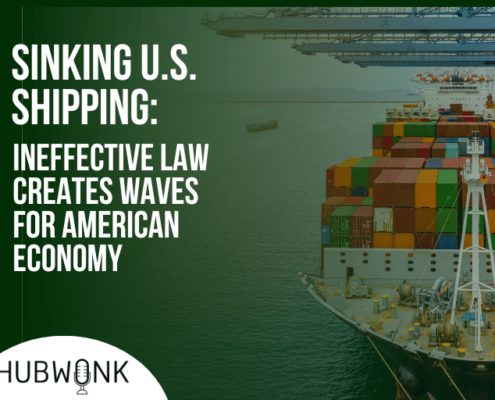
Sinking U.S. Shipping: Ineffective Law Creates Waves for American Economy
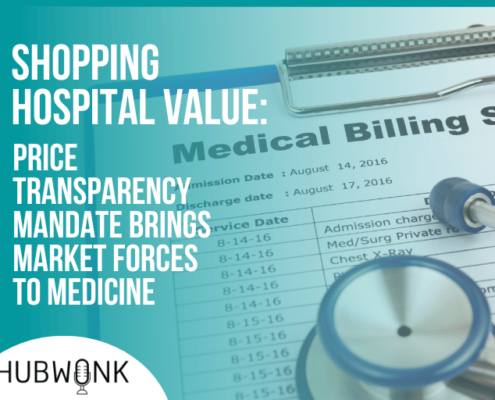
Shopping Hospital Value: Price Transparency Mandate Brings Market Forces to Medicine
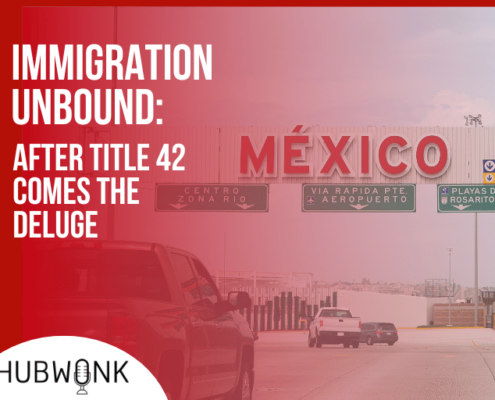
Immigration Unbound: After Title 42 Comes the Deluge
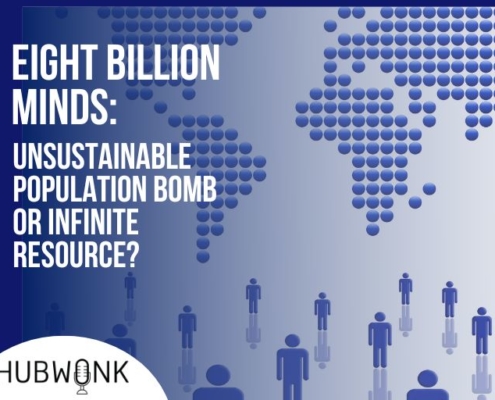
Eight Billion Minds: Unsustainable Population Bomb or Infinite Resource?

MBTA Safety Overhaul: Retooling Teams For Trustworthy Transit
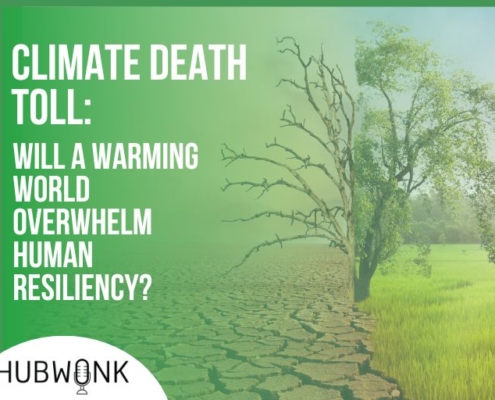
Climate Death Toll: Will A Warming World Overwhelm Human Resiliency?

Legal Property Theft: Legal Defense Against Town Taxman Taking Neediests’ Deeds
